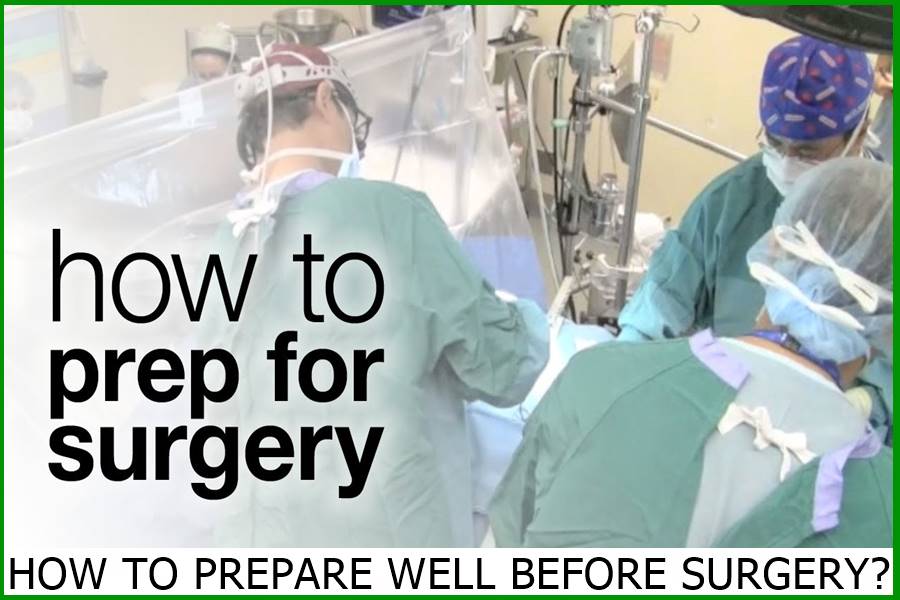Innovation of New technologies at the service of health 2023
Innovation of New technologies at the service of health 2023
From digital technology to biotechnology and robotics, science is innovating to provide better treatments for patients. Life modification has opened up new possibilities for treating serious illnesses. Patients are increasingly connected. They benefit from various applications that help them stay in shape. While robots have entered operating rooms, 3D printers manufacture prostheses, tissues, and soon, who knows, organs.
Doesn’t the deployment of new technologies risk excluding certain patients from care, or conversely, does it constitute an opportunity to improve access to care? And what are the ethical questions that the different countries will have to answer in the face of these new technologies?
Innovation at the service of health
After the advent of chemistry and the search for new therapeutic molecules, new technologies have brought many innovations for health. Biotechnology, further information and communication technologies, robotics, engineering sciences, digital technology… all these disciplines contribute to creating cutting-edge medicine.
Gene therapy and immunotherapy
In recent years, the biotechnological revolution has come from genome editing techniques. These tools consist of using “molecular scissors” such as CRISPR ( clustered regularly interspaced short palindromic repeat ) or TALEN ( transcription activator-like effector nucleases ). Gene editing makes it possible to create personalized gene therapies. Thanks to immunotherapy, genetic modification of cells offers hope for many cancer patients.
In August 2017, the US Food and Drug Administration (FDA), which provides authorizations for drugs, approved the marketing of gene therapy against leukemia, Kymriah, from the Swiss laboratory Novartis. The principle is based on personalized medicine. Immune cells from the patient are taken and genetically modified to be able to attack leukemia. These cells are called “CAR-T cells.” According to the FDA, in a clinical trial involving 63 patients, the remission rate reached 83% within the first three months of treatment. Each treatment nevertheless represents a cost of nearly 400,000 euros.
Robot suckers enter operating rooms.
In surgery, robotics is increasingly present among doctors. In September 2017, at the University Hospital Center (CHU) of Amiens, a child with severe scoliosis was operated on using a robot surgeon consisting of an arm, a computer, and a camera. The operation consisted of installing screws and hooks to straighten his back. The robot makes it possible to make smaller incisions for a delicate process.
Using robotics in the operating room opens up the possibility of operating remotely. Thus, in 2001, Professor Jacques Marescaux, a pioneer in robotic surgery, operated from New York on a patient from the University Hospital of Strasbourg for the removal of the gallbladder. This first was called “Operation Lindbergh,” about Charles Lindbergh’s first flight over the Atlantic in 1927.
If robot surgeons appear as medical progress, they also require well-trained doctors. Robots should not be designed to replace humans but to assist them. Psychologically, however, it doesn’t remain easy to accept being operated on by a machine without the supervision of a doctor…
Innovation of New technologies at the service of health 2023
3D printed drugs and fabrics
3D printing has countless applications in health, starting with the pharmacy with the printing of custom drugs. In the same way that from a prescription, a pharmacist can prepare a personalized medicine using the ingredients present in his pharmacy, 3D printing could soon create tailor-made medicines. This method would also make it possible to adjust the dose according to the patient.
In 2015, the FDA approved a 3D printed drug, an antiepileptic. In this case, the technology developed at the Massachusetts Institute of Technology (MIT) allowed a particular assembly of the drug, layer by layer.
If the 3D printing of drugs still belongs to the future pharmacy, 3D printers have already been proven to manufacture custom prostheses. But 3D printing could go even further in the future and produce tissue for grafting: cartilage to treat damaged joints or skin to make grafts. 3D printing of organs would solve the lack of donors while limiting the risk of rejection since the cells used can come from the patient.
Increasingly high-tech and connected health
Another important field is in the process of upsetting the relationship between patients and medical personnel: e-health. This is the set of health-related services that use new information and communication technologies.
Telehealth, or e-health, uses the Internet, smartphone applications, and connected objects. In 2016, the Lépine Competition rewarded an e-health application dedicated to diabetic patients, enabling them to follow their treatment better. This smartphone application provides people with diabetes with the exact insulin level to inject based on their activity, diet, and blood sugar levels.
However, smartphones are not the only connected objects used by e-health. Connected bracelets and activity trackers are on the rise. Practical and light, they offer to follow the daily physical activity of users and encourage them to move more to be in better health.
Connected watches are also part of this dynamic. For example, the Cardiogram application for the connected watch from Apple (Apple Watch) measures the heart rate every five minutes and thus detects abnormalities, such as arrhythmia due to fibrillation. Apple’s Health application proposes to collect information on the health of iPhone or Apple Watch holders (diet, physical activity, sleep, etc.).
In the era of big data, all data passing through connected objects or health systems could also help researchers and doctors in their work. The proliferation of applications such as data collection from doctors and pharmacists has considerably increased the mass of information in the health field. All of this data represents a godsend for researchers.
In France, data on health care reimbursements are collected by the National Health Insurance Interregime Information System (SNIIRAM). Another system, the National Health Data System (SNDS), collects health data made available to researchers after being made anonymous.
Such files make it possible to draw up a picture of the prevalence of a disease within the population, identify disease risk factors, or verify the effectiveness of treatments. The analysis of this data could help avoid significant health problems, such as that of the Mediator, by identifying the adverse effects of certain drugs.
Finally, new technologies can also help treat specific disorders, thanks to “serious games.” For example, virtual reality can allow independent patient rehabilitation in physiotherapy thanks to a helmet that takes him into a virtual space to help him perform movements.
Innovation of New technologies at the service of health 2022
New technologies that bring care closer or further away
The price barrier
If new technologies for health can represent progress to overcome specific diseases considered incurable until now, the cost of these new treatments raises a certain number of problems.
Thus, gene therapy can perform feats and restore sight to people suffering from a rare genetic form of blindness. After the authorization in the United States of Kymriah, the FDA agreed to use Luxturna, a gene therapy against a rare hereditary retina degeneration. But to avoid going blind, it costs 425,000 dollars per eye and more than 700,000 euros for both eyes… Similarly, the robotization of surgery requires high investments that are not within reach of all hospitals worldwide.
Better access to diagnosis and care
New technologies can help make diagnostics at a lower cost. For example, systems inspired by the smartphone are being studied to diagnose diseases in regions that do not have the latest medical technologies.
In the United States, scientists from Massachusetts General Hospital have imagined a device, the D3 System, connected to a smartphone, which records images. Information from cells present in a blood or tissue sample can be sent to a care center. The D3 quickly detects high-risk cervical smears. During the tests carried out with this system, the results of the analyzes were available in less than an hour, for a cost of fewer than two euros.
A chance for medical deserts and developing countries
Teleconsultation allows for better access to care. It represents a significant asset for rural areas and developing countries. Although the number of doctors in France seems high (about 200,000), their distribution across the territory remains uneven. Telemedicine, therefore, provides a solution to medical deserts. Health centers deployed in the environment can work in teleconsultation with hospitals and transmit medical data (radiology, test results, etc.) to avoid sometimes unnecessary patient transfers to emergency services.
The rise of mobile telephony in developing countries also makes it possible to improve the healthcare offered thanks to telemedicine. In India, a patient living in a rural area can pick up a drug from a pharmacy with a prescription SMS from a telemedicine center. In Africa, telemedicine is used as a tool for training students.
Innovation of New technologies at the service of health 2022
New relationships between patients and doctors
New information technologies are changing the relationship between the patient and the doctor through telemedicine. With teleconsultation, the doctor and the patient are no longer together in the same room, which can introduce psychological and physical distance. The face-to-face between the patient and the doctor has been modified: body language is less present at a distance.
With the proliferation of websites devoted to health, more and more patients are more and more numerous to seek, with unequal success, information online and on social networks. Faced with this mass of information, medical centers are developing their sites to provide relevant information to patients.
These new technologies also risk excluding populations who are not equipped or comfortable with these tools, such as the elderly.
Towards a globalized medicine in search of ethics
What ethics are in a globalized world?
With the development of genome editing methods, the genetic modification of embryos becomes possible. A milestone was reached in 2015 in China when, for the first time, researchers from Canton modified a gene responsible for beta-thalassemia in human embryos. True, in this case, the seeds were not viable. But the possible use of molecular scissors like CRISPR to modify sources raises concerns among many scientists worldwide.
In 2015, experts from the United Nations Educational, Scientific and Cultural Organization (Unesco) called for a moratorium on these methods of modifying human DNA for ethical reasons. In 2016, the British authorities gave the green light for laboratory experiments on human embryos using the CRISPR tool. Therefore, the possibility of a genetically modified human seeing the light of day does not seem to have been definitively ruled out, not to mention the risks of eugenic abuses.
The provision of genetic tests to the general public raises many ethical questions. If genetic tests are reserved for certain specific medical circumstances in France, an American company, 23andMe, markets its genetic tests to individuals. Since March 2018, the company has even offered a breast cancer screening genetic test, which looks for mutations in the BRCA1 and BRCA2 genes, which are often implicated in cancer.
These tests worry many scientists. How will a healthy person in whom a high genetic risk is detected react? Conversely, will a person with a low genetic risk feel protected and, therefore, more inclined to engage in risky behavior?
Innovation of New technologies at the service of health 2022
New technologies and medical tourism
New biomedical technologies are not present everywhere in the world. Some patients will therefore look elsewhere for innovative care to which they do not have access in their country.
In medically assisted procreation (MAP), regulations vary significantly from country to country. We can cite the case of “babies with three parents,” whose design only the United Kingdom has authorized. In this specific case, it is a question of avoiding transmitting mitochondrial diseases from the mother to her child. In fact, in a cell, the DNA is mainly found in the nucleus, but there is little DNA in the mitochondria, the “energy factories of the cells.”
Some severe diseases are linked to mitochondrial genes passed down from the mother. To make a “three-parent baby,” the nucleus of an egg from the mother is inserted into that of a donor, from which the heart has been removed. Then the egg is fertilized with the father’s sperm. The baby will therefore have mitochondrial DNA from a donor and the parental genes in the nucleus of its cells.
In April 2016, a baby was born with this technique in Mexico without any regulations. The procedure prevented the mother, who had a fatal disease, Leigh’s Syndrome, from passing it on to her baby. The couple left the United States for Mexico to give birth to this child.
This technique raises ethical questions due to the presence of three parents, even if the mitochondrial DNA is very much in the minority. The method is also controversial, as it does not appear to be completely safe. It is therefore worrying that private clinics use this method in countries without regulation.
In another area, advanced cancer treatments such as immunotherapy are unavailable everywhere. Some patients are appealing for donations to obtain the necessary funds for these “last chance” treatments in the United States.
Finally, the practice of telemedicine across borders raises many problems in terms of legal liability and translation; errors in this area can endanger a patient’s life.
The problem of health data privacy in the age of big data
With the digitization of health data, the question of their confidentiality arises. This subject was addressed in France during the Estates General of Bioethics in 2018. Open data ( open data ) would go against medical secrecy. However, in February 2018, following checks carried out on the SNIIRAM database, the National Commission for Computing and Liberties (CNIL) gave Health Insurance a formal notice to strengthen its means of security.
Don’t connect tools put patients at risk of seeing all of their collected data grouped? Is there a risk that one day an insurer will know the health problems of its policyholders and modulate their premiums according to their risk of disease? Medical secrecy aims to protect sick people so that they are not discriminated against because of their illness.
How can this secret be effectively protected in the era of big data? Many data collected without patients’ knowledge during searches on the Internet or connected objects could be used for commercial purposes. How to ensure that the GAFA (Google, Apple, Facebook, Amazon) do not appropriate them?
New health technologies are, whether they exclude or bring patients closer to care. Therefore, a field teeming with innovation. With them emerge new and daunting ethical questions. These questions go beyond borders and cannot be solved only at the national level. In addition, they call into question such fundamental questions as equality in access to care, the limits of science in the intervention of the human being, and finally, our conception of it…
How to Record a Zoom Meeting With or Without Host Permission
Best things you need to know before buying a pedigree dog 2022
12 tips for hiring the best graphic designer 2022
BEGINNER SINGING LESSONS: THE BASICS 2022
Innovation of New technologies at the service of health 2023


